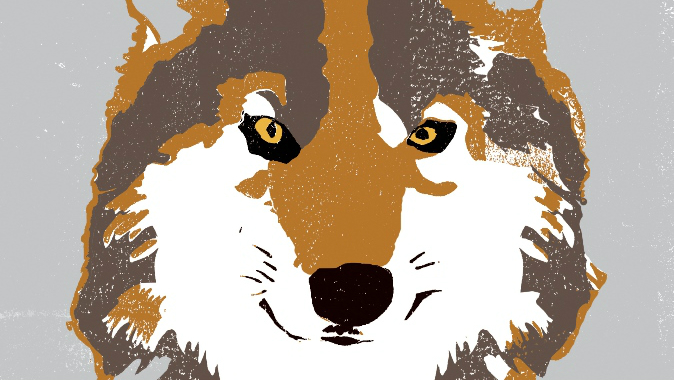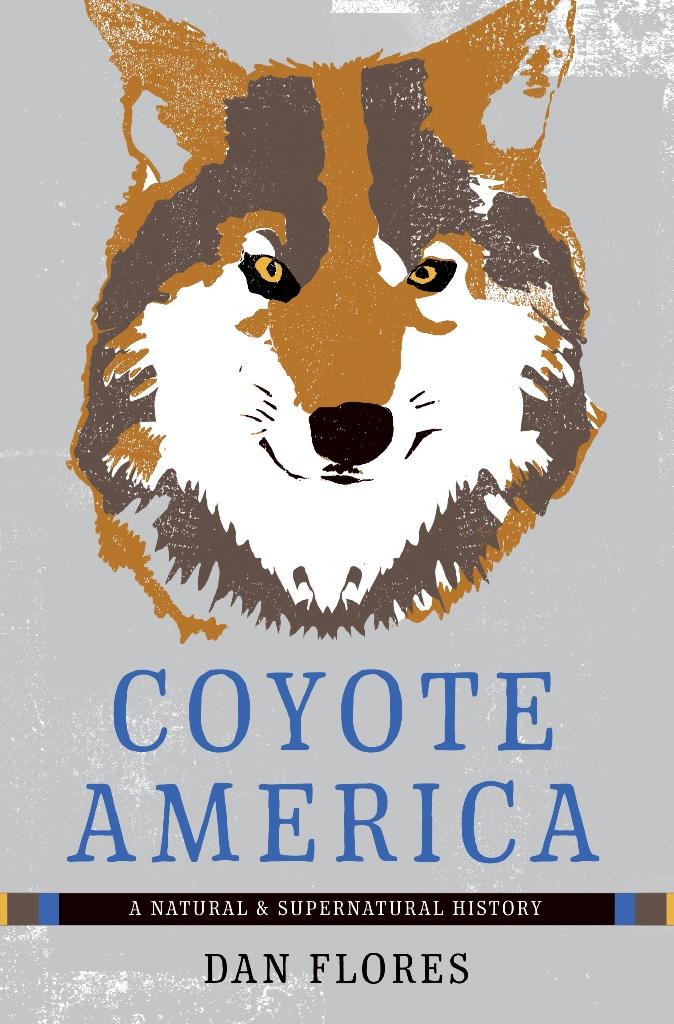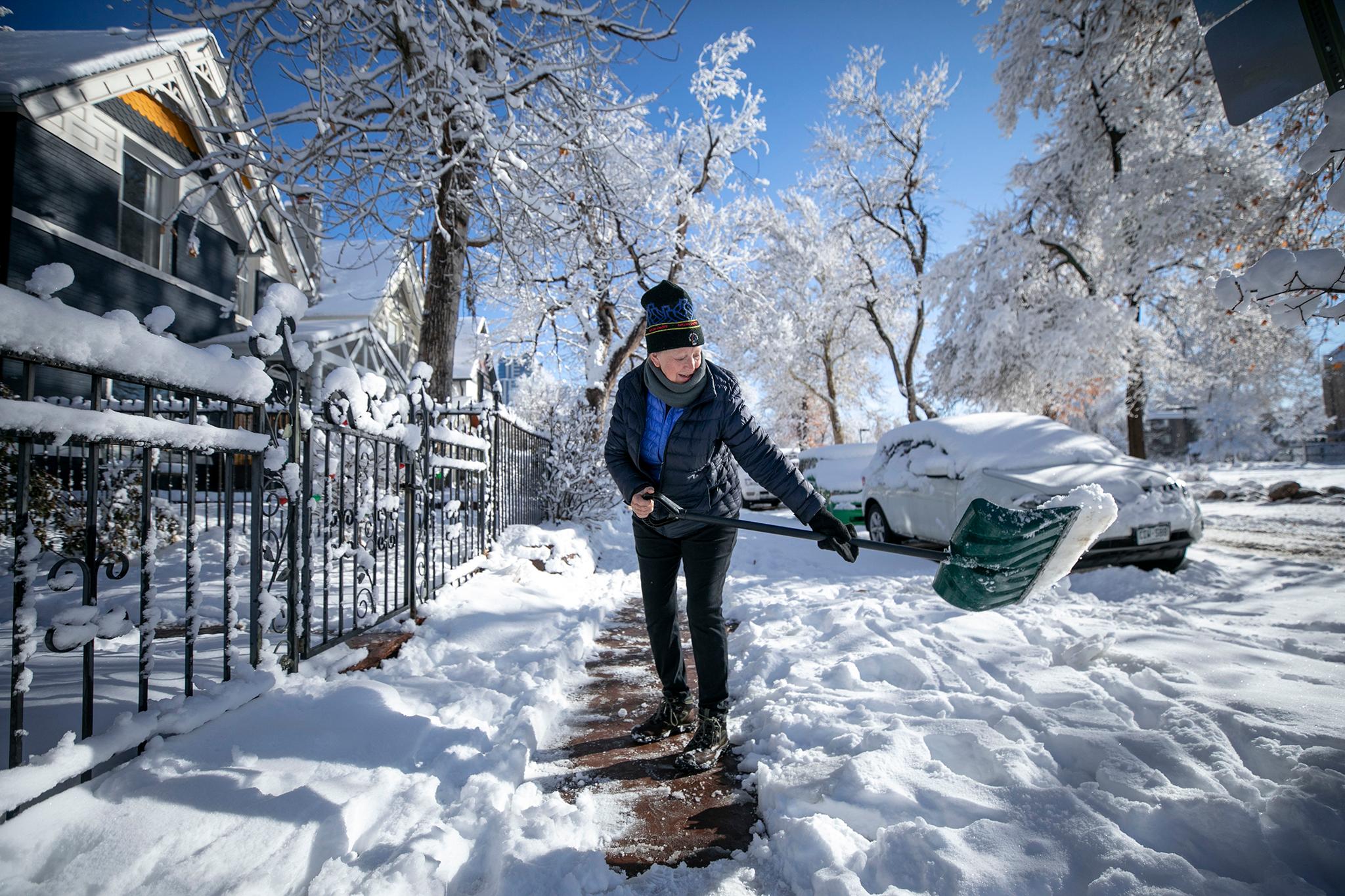

According to Dan Flores, the original anthem of North America is a coyote's howl. It's "a canine 'Star-Spangled Banner' that has been played for nightly sporting events on this continent for nearly 1 million years," Flores writes in his new book, "Coyote America." But while coyotes were revered by American Indians, they have been persecuted more than any other species by European-Americans who moved to the continent.
Flores' biography of coyotes explains the long government campaign to eradicate them, which once included a factory in Denver that produced poisons to kill tens of thousands of the animals a year. And yet, Flores explains, efforts to wipe out coyotes ultimately led to their spread from the West across the United States.
"Hound it and mark it for extermination, and not only will its biology defeat you every time, but it will colonize into new settings where you never in your wildest dreams expected to confront yellow eyes peering out of the twilight," he writes.
Flores spoke with Colorado Matters host Nathan Heffel.
Read an excerpt:
Coyotes initially confused the Europeans and Africans who arrived in North America. What kind of animal was this insolent wild canine? A wolf? A fox? A jackal perhaps? After a couple or three centuries of indecision, we ended up making a conscious (and even datable) effort to malign these creatures, a sentiment that gained speed in the twentieth century, until we were hurling around wild epithets like “original Bolsheviks.” Eventually no American animal called up more heroic measures from us to achieve its total eradication. Yet for reasons that mystified everyone until just a few decades ago, coyotes proved they could take every haymaker we could throw, then respond with an almost nonchalant takeover of the ground we were standing on. By the time our attitudes about them finally began to shift in the 1960s, coyotes were well into their own manifest destiny, even into a variation on the classic American melting pot. Circulating among us now like ghosts of the continent’s ancient past, as if to make us cognizant that we are new and barely real here, coyotes oddly appear to grasp with those vivid yellow eyes that they function as avatars, stand-ins to help humans see themselves. If so, they have often reflected an edginess back to us. Like us, coyotes are bold, sometimes aggressive, occasionally menacing. Edgy. We certainly see that in them and perhaps perceive it in ourselves. No better example of edginess in the coyote-human relationship exists than this: as a general topic of conversation in today’s America, coyotes are political. That shouldn’t really be surprising, on reflection, but coyotes have a remarkable ability to demonstrate just how easily we can find things to disagree about in modern society. In the 1980s a Yale University study of the US public’s appreciation of wild creatures offered dramatic proof of the success of a century of hate messages about coyotes. Yale’s poll ranked coyotes dead last in public appeal—behind rattlesnakes, skunks, vultures, rats, and cockroaches. Then, as a result of a new predator appreciation that elevated gray wolves to media and environmental stardom in the 1990s, the coyote’s stock as a smaller wolf cousin began to rise, at least among liberals and environmentalists. Coyotes have never risen to full gray wolf status as environmental darlings. But their colonization of our cities is, if anything, exposing humans and coyotes to one another with an intimacy that’s allowing new generations of Americans to form their own opinions. The shock of that intimacy has earned them enemies but also an awful lot of admirers. Coyotes may now have more fans in the United States (and, as an iconic American animal, around the world) than ever before, but in contemporary America, coyotes still do one thing more than anything else: die, at a rate unmatched by any other large animal. Other than a federal poison ban riddled with loopholes and a handful of state restrictions against leghold traps and coyote-hunting contests, coyotes enjoy no governmental protection against being killed. The best guess is that altogether we kill about 500,000 of them a year. Roughly once every minute, about the time it takes to read this page, someone somewhere is ending the life of a coyote. That is only the current body count in a history that easily wins them the title of most persecuted large mammal in American history. Persecuting an animal in a battle you can’t win is an act of political ideology. Indeed, the political thing with coyotes reaches surprising dimensions. It’s hard to escape a sense that coyotes have joined religion, the Iraq War, Obamacare, and climate change as one more thing the culture warriors in America have to disagree about. Asking people what they think about coyotes is akin to asking them what they think of John Wayne. The answer is immediately diagnostic of a whole range of belief systems and values. The political disagreement even extends to how to pronounce the name of the animal. Simple pronunciation, I’ve come to realize, can serve as a clue in coyote politics, if not a hard-and-fast rule. Defenders and supporters of coyotes, usually (but not always) from educated, urban backgrounds, tend to pronounce the animal’s name ki-yoh-tee, with the accent on the second syllable and a soft t. Americans from rural backgrounds—who commonly fill the ranks of those who manage coyotes, shoot and trap them, or fear them and want them killed—struggle with a three-syllable name, a rendering that apparently sounds pretentious. Or maybe as a word out of the Southwest, ki-yoh-tee just sounds too fancy, perhaps too Spanish. In any case, to rural people the comfortable name is ki-yote, accent on the first of the two syllables. (I make an effort to untangle this pronunciation war later in the book.) Let me tell you what this simple difference in pronunciation can mean. Working on this book I had occasion to do a couple of public talks that left me with, let us say, an enhanced perspective on coyotes as a gateway into the culture wars. That began when, in 2013, a representative of a Nebraska society dedicated to the career and literature of a famous Great Plains woman writer invited me to do a talk in her honor. Asked by a board member what I had in mind as a topic, I innocently offered up “something on coyotes.” There was a moment of silence, and then the midwestern voice on the other end of the line said flatly, “Let me check with the group on that,” followed by this polite warning: “But if we have you do that, could you please call them ki-yotes?” In fact the board said no, so I ended up doing a talk on a different topic that had nothing to do with coyotes. But apparently because I had merely suggested coyotes as a topic, at the dinner before the public event, not a single member of the board of this literary society, all of them well-heeled ranchers judging by their attire, bothered to greet or shake hands with their speaker. It was not one of Nebraska’s finer moments. A month later I was addressing a large and enthusiastic crowd in Northern California, this time doing a talk about coyotes and this time among obvious coyote fanciers. Inside a classic old theater where Mark Twain and Jack London had once held forth, the coyote’s intelligence and life story were held in high regard. Everyone in the audience had a personal coyote story. Outside the sweet and unmistakable scent of the marijuana harvest in the surrounding hills marked the time of year and suffused the balmy California air. Somehow that seemed appropriate as another coyote culture war marker; in California I was obviously speaking (as a friend put the matter) to “coyote-loving hippies.” As coyotes have moved in to live among us, denigration of their survivability has become common in conversation: “When the world ends only cockroaches, rats, and coyotes will be left.” What I’m about to say next will not fall sweetly on the ears of those who subscribe to that view. But here it is: few animals in the world come closer to mimicking us and our own unique abilities. I think the Indians’ grasp of that is the reason, perhaps as distantly as 10,000 years ago, they designated an avatar form of the coyote as a principal deity, responsible for creating all of North America and for instructing them about the human condition. The resulting Old Man Coyote character is not only one of the oldest gods of which we have record but one of the most intriguing in all history. Excerpted from COYOTE AMERICA: A Natural & Supernatural History by Dan Flores. Copyright 2016. Available from Basic Books, an imprint of Perseus Books, a division of PBG Publishing, LCC, a subsidiary of Hachette Book Group, Inc. |









